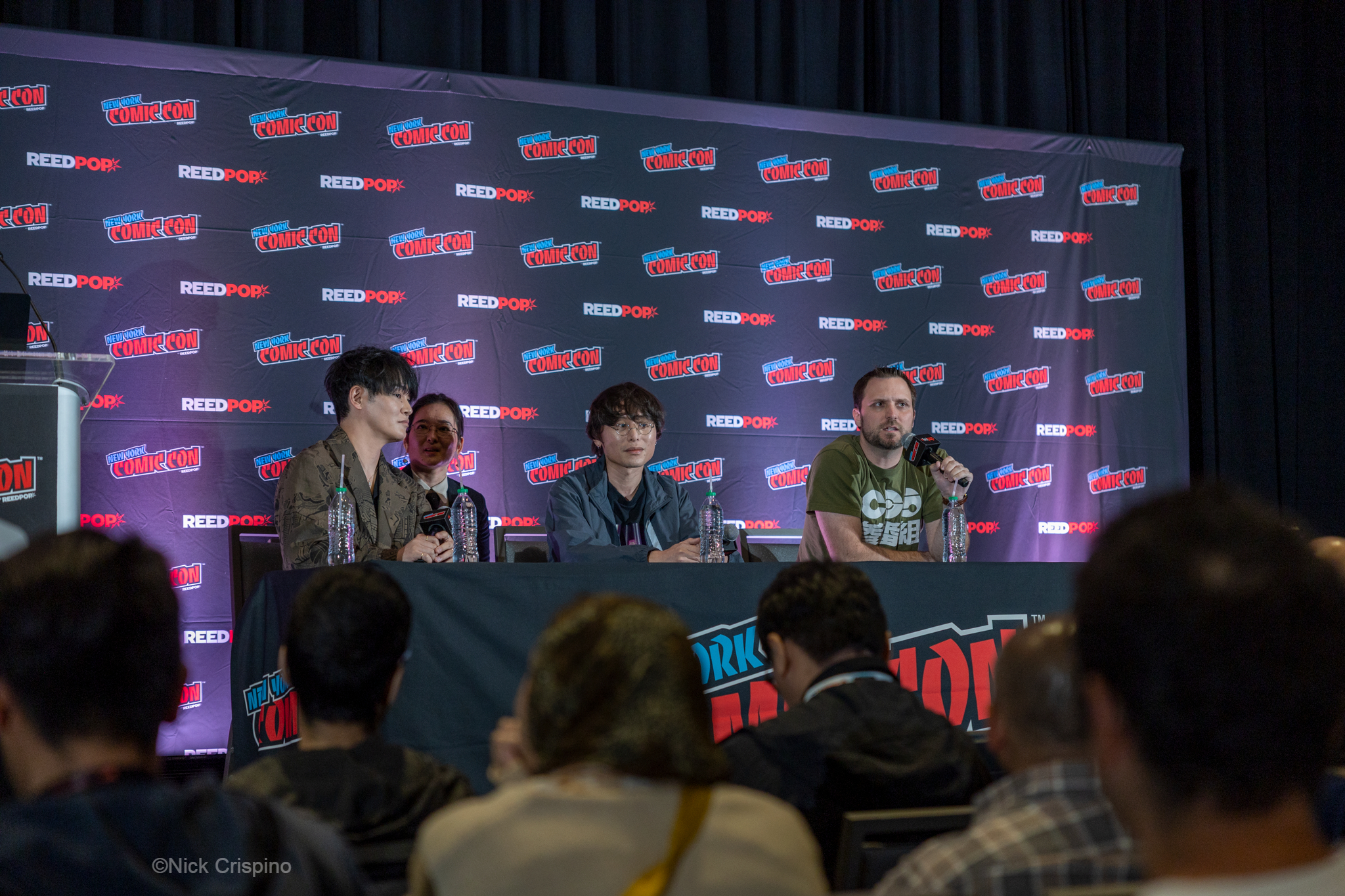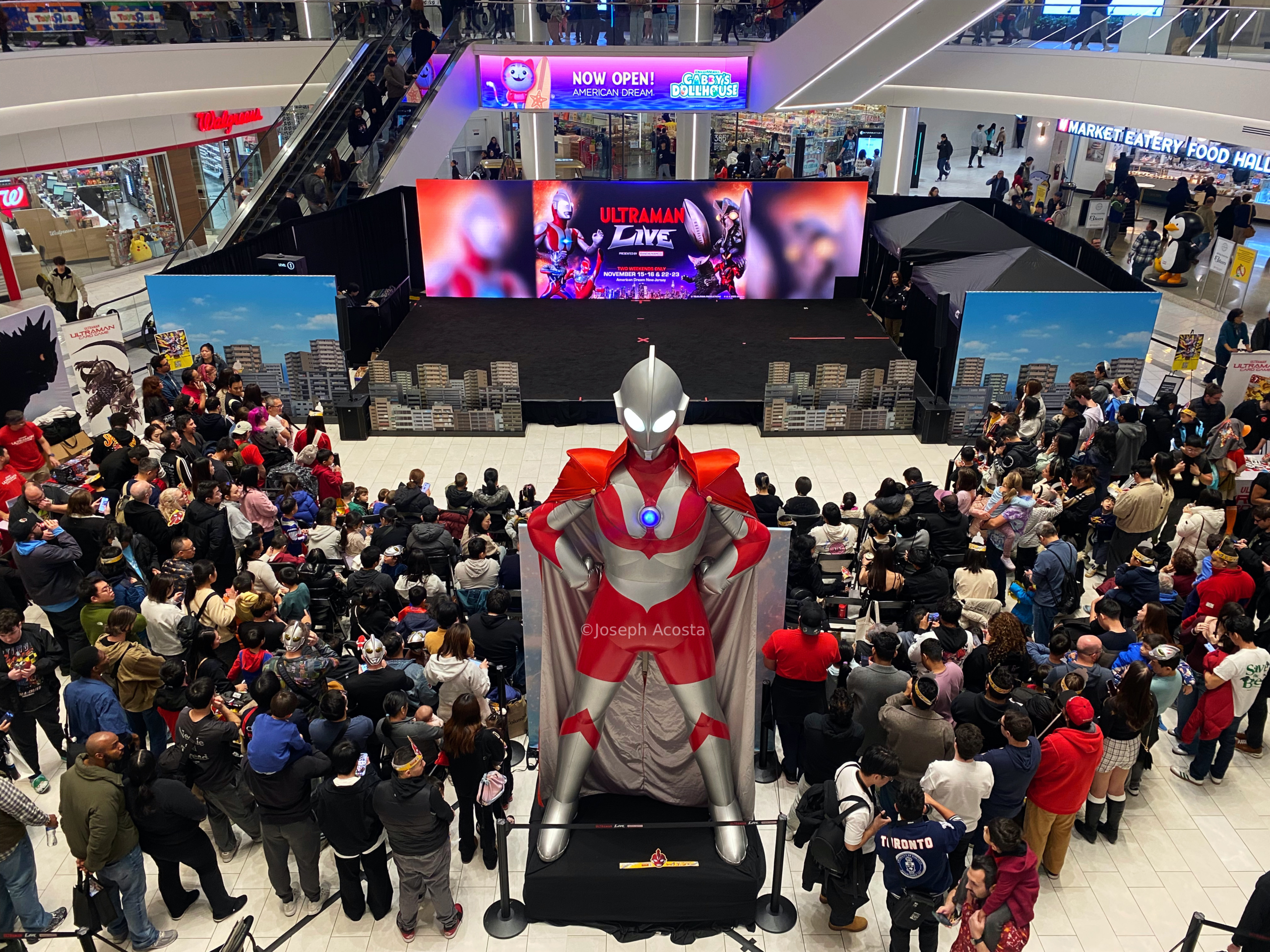In recent years, kaijū and tokusatsu genre fans have been gifted with almost unlimited access to learning about upcoming Japanese productions in the genre. Within the past few years alone, we’ve seen plenty of documentation for the releases of Toho’s Godzilla: Minus-One, Tsuburaya Productions’ Shin Ultraman (2022), and the Toei—Shochiku co-production What To Do With A Dead Kaijū? (2021), even independent movies such as the film by Yoshikazu Ishii (Ultraman Saga, Godzilla: Final Wars, Attack of the Giant Teacher), Yuzo: The Biggest Battle In Tokyo (2022). The internet has done wonders for a fandom which at one point only had limited resources to access these productions or hear anything about them. Internet thread boards and forums were the only way to find information about some of these films like the Heisei Gamera and Godzilla movies (with the occasional Fangoria or G-Fan magazine article), but with the development of the internet bridging the gap between Japan and America comes the issue of forgetting the benefits we have now compared to even a decade ago.
Fans of Ultraman and kaijū/tokusatsu content have been spoiled in recent times with the Mill Creek Entertainment Blu-ray and DVD releases of the Ultraman franchise, the simulcast of the last three Ultraman shows on YouTube, and even distribution of the “Ultra Galaxy” miniseries. We’ve even seen releases of new independent kaijū films on Blu-ray, DVD, and VHS from SRS Cinema within a year of their respective releases.
What many people might not understand is the difficulty that comes with licensing and distributing foreign films. To help bridge the gap, here’s an explanation for how it works (Disclaimer: I have not worked on any releases of a Japanese film in the west, but I have had many conversations with experienced professionals who have).
Domestic Release
In Japan, when a Japanese studio is looking to release a film, they’re going to do a domestic release first. This is mostly due to the lack of resources to conduct any other type of release. In Japan, Toho is the main distributor for almost all Japanese films (owning over 90% of Japanese theaters), this led to in 2022, Toho being subject of an investigation into a possible breach of Japan’s anti-trust laws [monopoly laws]. In 2022, Toho collected a total revenue of just 1.19 billion dollars (and that’s an increase for the company). For comparison, the 2021 movie Spider-man: No Way Home made 1.9 billion dollars for its international release. Many people compare Toho to the likes of Disney but should only compare the two in relation to how big Toho is in Japan compared to companies like Shochiku or Nikkatsu.
Toho has only recently passed a billion dollars in sales. A company such as Sony Pictures (who in past years has been predicted to be sold to Apple or another competitor) had a revenue of 7 billion last year (that’s below the profits of the 2020 fiscal year). So if Toho is lucky to pass 1 billion in sales, how can they afford to release a film beyond its borders? When releasing a movie, the company has to either broker a deal with a middleman or make a deal with the theater chains (ex. AMC or Regal) to show the movie in their theaters.
Once a Japanese film is released in theaters, the next step is seeing how marketable the film is beyond just the theatrical window. Streaming, television, re-release to theaters, physical, and international releases are all methods the studio has to take note of, how well did the movie do critically? Did audiences like watching the movie? Is putting this film out to another medium going to make us lose money? Etc. After careful consideration, the distribution team can move forward with further releases. Typically, it takes one year for a Japanese film to be released on physical media after the theatrical window (streaming and televised showings have a similar release window).
International Release
In Japan, the copyright laws and contracts are much different than in America, typically in America when somebody voice acts or works on a project, they’re paid the amount agreed upon and that’s it. In some cases, such as directors, writers, A-list actors, etc. you might get a cut of physical, streaming sales, or theatrical sales. However, in Japan it’s typical for people to get royalties for their work on projects. When licensing films this even happens. As an example, Akira Kurosawa (‘s family) who wrote, edited, and directed his films gets royalties from Toho for any money made off of his films like Seven Samurai (1954), Yojimbo (1962), and Red Beard (1965). This includes licensing them to foreign distributors. So, in order to properly license a film from some companies, you have to have all the legal papers straight to ensure you won’t get sued by a private party for not properly paying them for their involvement with the project.
Beyond royalties, there’s also the approval of importation and the fees that come with that. To ensure it’s okay to show a film in a different country, it has to go through customs to prevent any illegal activity. And as with all government involvement, there’s fees and taxes for those films to get imported. Sometimes, films like 1985’s Pulgasari are banned from being shown in the United States. However, these bans may eventually be lifted but those bans can prevent proper distribution for years.
Finally, the deal of what the license is exactly needs to be established. There’s a separate license for television airings, theatrical showings, streaming, and physical releases. All of these formats are taken into consideration by the companies looking into releasing a film outside of their native country. It’s common to find these in package deals that cannot be broken. As example, when Sony acquired the rights to the Millennium Godzilla films, Godzilla Against Mechagodzilla (2002), Godzilla: Tokyo S.O.S. (2003), and Godzilla: Final Wars (2004)all didn’t include theatrical rights with the license. If Sony wanted to release those films theatrically, they would have to make a new deal with Toho, or another company would have to pick them up (when Godzilla Against Mechagodzilla and Godzilla: Tokyo S.O.S. were released theatrically stateside, that was by Toho through Fathom Events). It also depends on if they want North American rights (including Canada) or just simply the United States (or even possibly including the United Kingdom).
After all the fees, royalties, and licenses have been paid, now the company can finally start putting money into the actual release for the film. In any movie or television show’s case, you have to market it or nobody will know it’s getting released. I was privileged to attend the worldwide premier of Yoshikazu Ishii’s newest kaijū movie Yuzo, The Biggest Battle in Tokyo (2022) but because it wasn’t marketed that much, barely anyone knew unless they followed the director on his personal accounts. If you don’t create posters in the native language, or cut together trailers, TV spots, clips, press releases, or post anything (all of which will cost money) you won’t get the returns you’re looking for. For example, Ultraman: The Next (2004) and Ultraman Nexus (2004-2005) were cited to have been negatively impacted by the marketing from the director.
Distribution success isn’t only marketing however, it’s also localizing it for the audiences you’re showing it to. You already have to fight the product because it’s something from a completely different country, but you have to ensure that the film is sold to your audience, which in part is from marketing but if a country historically doesn’t like kaijū films, distributing a kaijū movie in that country may not end with the desired results (unless you’re wanting a tax write-off).
In the world of anime especially, there are plenty of examples of theatrical releases for films. Crunchyroll released one of the newest Dragon Ball movies Dragon Ball Super: Super Hero (2022)to American theaters in August of 2022 after the June 2022 Japanese release. This theatrical run included subtitled or dubbed showings. Shin Godzilla (2016)saw a limited American theatrical run just three months after the Japanese release, this was something unprecedented in the world of tokusatsu and kaijū, take a look at past films, it wasn’t until 1956 that Godzilla (1954)would infamously be released in the United States as Godzilla, King of the Monsters! A worse time-table is the 1970 US release of Invasion of Astro-Monster (1965) as Monster Zero (a.k.a. Godzilla vs. Monster Zero). When looking at these year-plus time-tables for theatrical releases, thinking we have to wait just shy of a year now is remarkable.
Another benefit for living in the modern day is the possibility of releasing something to streaming internationally, while sites like Tubi, Hulu, and Disney+ haven’t helped in these regards, Netflix is home to the Fullmetal Alchemist (2017)live action film along with the Godzilla anime trilogy and the award-winning series Godzilla: Singular Point (2021). Thanks to streaming, companies wouldn’t have to pay to get the film clearance for theatrical showings, pay to market the film with things such as posters or advertisements, and solely depend on the user base of the streaming service. In the five examples listed, they were released to Netflix and that user base, which almost guaranteed a success for each property. Netflix even works with foreign companies for products like the award-winning drama series Squid Game (2021-) as the distributors.
Once a film has been released to other outlets (beyond theaters) in Japan, it’ll take approximately another year till most companies will be willing to release the film outside its borders on a physical medium. This is, in part, due to the fear of “reverse importation”. Reverse importation is the practice of something being released to a foreign market and then being imported back into its home country. In Japan, the average DVD price is 72 dollars (for comparison, the average DVD cost in America is about 15 dollars), this is because renting movies and television is still very popular. So, to help cater to that market, the prices for movies are extraordinarily high. An example of this is Shout! Factory’s Blu-ray release of the Kamen Rider Zero One . It was released to Blu-ray in the United States but with burned in English subtitles, this means you can’t take them off and they’re a permanent part of the film. This was partly done because Zero-One is one of the most recent Rider shows, it’s selling for less than 60 dollars in the United States, so if Japanese audiences wanted to, they could reverse import it and get it for a cheaper price than the Toei Japanese releases (making Toei lose money on less units sold of their own product). To maybe fight that, Shout! Factory had to make the subtitles unremovable so it might lose interest in Japanese audiences.
The End of the Line
The typical license lasts for approximately five years, when Kraken Releasing acquired four of the Godzilla films from Toho, they held the rights to those films for five years. The 2016 Blu-ray of The Return Of Godzilla (1984)went out of print because the five-year contract had ended, and the film has since fallen into “OOP status” (out of print status). Not every contract is for five years, some are based on units made, some are longer than five years, some are shorter, it really depends on the contract but typically you’ll see a five-year deal. Once a film’s rights have lapsed with a company, they revert back to the owner of the film in Japan and it’s up to them to create a new deal with the same company, a new company, or no company.
So now hopefully the struggle is clear that companies have on both sides whether it’s trying to license a product from Japan or a Japanese company trying to sell a product to foreign markets. Many people like to point fingers and complain about companies and their lack of wanting to help their fans but it’s mostly because of business practices that are required to keep your favorite franchises successful. As an example, releasing Shin Ultraman to video-on-demand through Ultraman Connection would have been a huge loss of money. In contrast, by making a deal, agreeing for a large distributor to pay any fees, royalties, and cost to license and release the film, Tsuburaya can make more profits to put towards future productions. For independent productions, it’s less difficult because of the risk of not being there (there’s still a risk, but it’s not millions of dollars, it may be hundreds of thousands).
With the rise of demand for Japanese special effects films, it’s likely higher-profile or higher interest titles will get a release they deserve, and with companies offering subtitles for their films, it makes distributors more likely to acquire a title because they don’t have to pay for a translator to translate the film. It makes dubbing a film easier, and it bridges the gap between Japan and other territories.





